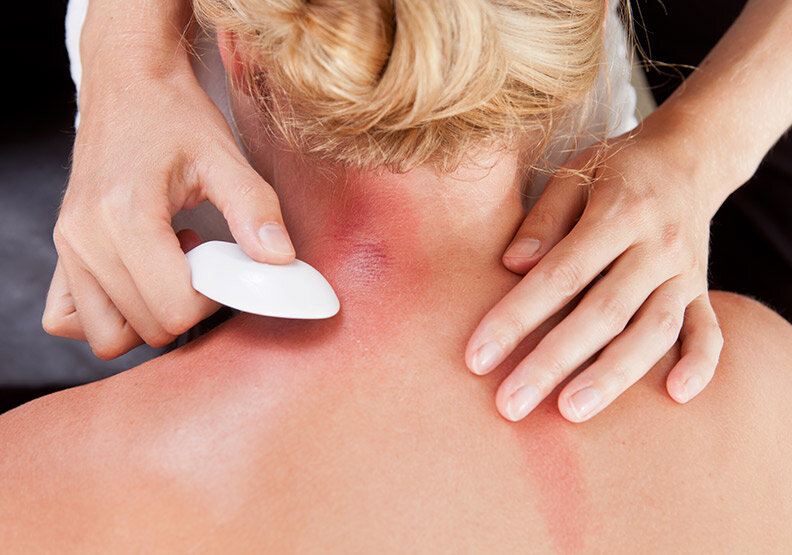Gua Sha: the Original Form of At-Home Self-Care
By Dr. Ming Wu and Dr. Wei Li
You may have heard about gua sha. It seems to have become the hottest skin-boosting technique. However, gua sha can offer so many more benefits besides enhancing beauty.
Gua sha is the one of the original forms of at-home self-care. Because it is easy to learn and practice, and because of its effectiveness, gua sha has been practiced by Chinese families for thousands of years.
What can gua sha do?
alleviate flu and cold symptoms
break down scar tissue and connective tissue, improving movement in the joints
relieve pain or tension in the muscles and joints, such as lower back pain, neck and shoulder pain
speed up muscle recovery
reduce perimenopause symptoms, such as sweating, insomnia, and headaches
varicose veins
ear infection
degenerative osteoarthrosis
acne
chloasma
chronic fatigue syndrome
heat stroke
and more
What is gua sha?
Used in traditional Chinese medicine, gua sha involves scraping a flat, rounded tool over the skin. Translated, gua means press or stroke, and sha refers to a rash or redness.
Gua sha treatment relaxes the muscles, gets the energy and blood moving. It boosts the circulation – studies show by up to 400 percent – which takes away toxins and brings in oxygen and nutrients.
Gua sha aims to move energy, known as qi or chi, around the body. According to traditional Chinese medicine, qi or chi is energy that flows through the body. A person’s qi must be balanced and flowing freely to ensure their health and wellbeing.
Qi can become blocked, causing pain or tension in the muscles and joints. Gua sha aims to move this blocked energy to relieve aches or stiffness. Blood stasis or stagnation is also a cause of pain and illness. Another aim of gua sha is to move pooled or stagnated blood to relieve symptoms.
Gua sha tools
Even though traditional gua sha tools are often made with bian shi (砭石,a type of stone found in Sibin China), jade, or ox horn, anything that has a round, smooth surface can be used for this purpose. For example, Dr. Ming Wu often uses a small tea cup to perform gua sha. The back of a curved wood comb or a porcelain spoon can also be used for gua sha.
Gua sha oils
Different oils can be used with gua sha to enhance the effects. Rub the oil on the areas where you would like to treat before doing gua sha.
Qufeng oil: for cold and flu, respiratory tract infection
Siang Pure oil: for stomach flu, food poisoning, indigestion, and other stomach or intestinal problems
Wanhua oil: Arthritis, muscle strain, chronic pain
Grapeseed oil: facial
Videos we recommend:
Laurie’s testimony on gua sha
Gua sha for ear infection
Gua sha for flu
Gua sha for varicose veins







